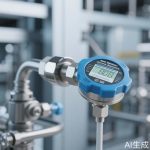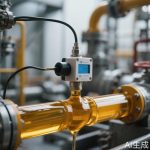In an era where connectivity defines progress, wireless sensors have emerged as the unsung heroes of modern technology. These tiny, intelligent devices are quietly transforming industries, homes, and cities by providing real-time data without the constraints of physical connections. From monitoring industrial equipment to tracking environmental conditions, wireless sensors are creating smarter, more efficient systems that respond to our needs with unprecedented precision.
The beauty of wireless sensor technology lies in its versatility and scalability. Unlike traditional wired systems that require extensive infrastructure and maintenance, wireless sensors can be deployed quickly and adapted to various environments with minimal disruption. This flexibility has opened new possibilities across multiple sectors, including manufacturing, healthcare, agriculture, and urban planning, where continuous monitoring is crucial for optimal performance and safety.
One of the most significant advantages of wireless sensors is their ability to operate in remote or hard-to-reach locations. Powered by advanced battery technology and energy harvesting methods, these devices can function for extended periods without human intervention. This capability is particularly valuable in environmental monitoring, where sensors track air quality, water levels, and wildlife movements in real time, providing critical data for conservation efforts and climate research.
In industrial settings, wireless sensors are revolutionizing maintenance practices through predictive analytics. By continuously monitoring machinery vibrations, temperature, and pressure, these sensors can detect anomalies before they lead to equipment failure. This proactive approach not only reduces downtime but also extends the lifespan of valuable assets, resulting in substantial cost savings and enhanced operational efficiency for businesses worldwide.
The healthcare industry has embraced wireless sensors to improve patient care and outcomes. Wearable devices equipped with sensors can monitor vital signs, track medication adherence, and even detect falls among elderly patients. This technology enables healthcare providers to deliver personalized, remote care while giving patients greater independence and peace of mind. The data collected also contributes to medical research, helping scientists better understand disease patterns and treatment effectiveness.
Smart cities are leveraging wireless sensor networks to optimize resource allocation and improve urban living. Sensors installed throughout urban infrastructure monitor traffic flow, parking availability, waste management, and energy consumption. This data allows city planners to make informed decisions that reduce congestion, lower emissions, and enhance public services. As urban populations continue to grow, wireless sensors will play an increasingly vital role in creating sustainable, livable cities.
Despite their numerous benefits, the widespread adoption of wireless sensors faces challenges related to security and interoperability. As these devices collect and transmit sensitive data, robust encryption and authentication protocols are essential to prevent unauthorized access. Additionally, the lack of universal standards can complicate integration between different sensor systems. Industry leaders are actively addressing these concerns through collaborative efforts to establish secure, compatible frameworks.
Looking ahead, the future of wireless sensors appears brighter than ever. Advances in artificial intelligence and edge computing are enabling sensors to process data locally, reducing latency and bandwidth requirements. The integration of 5G technology will further enhance connectivity, allowing for faster data transmission and supporting more complex applications. These developments promise to unlock new use cases and drive innovation across all sectors of the economy.
As we continue to embrace the Internet of Things (IoT), wireless sensors will form the backbone of our connected ecosystem. Their ability to gather accurate, real-time data from the physical world and translate it into actionable insights is fundamentally changing how we interact with our environment. From optimizing industrial processes to improving quality of life, these remarkable devices are quietly powering the digital transformation that defines our age.




Leave a Message